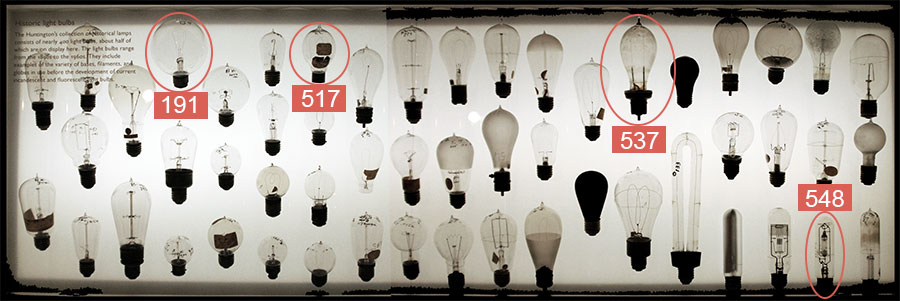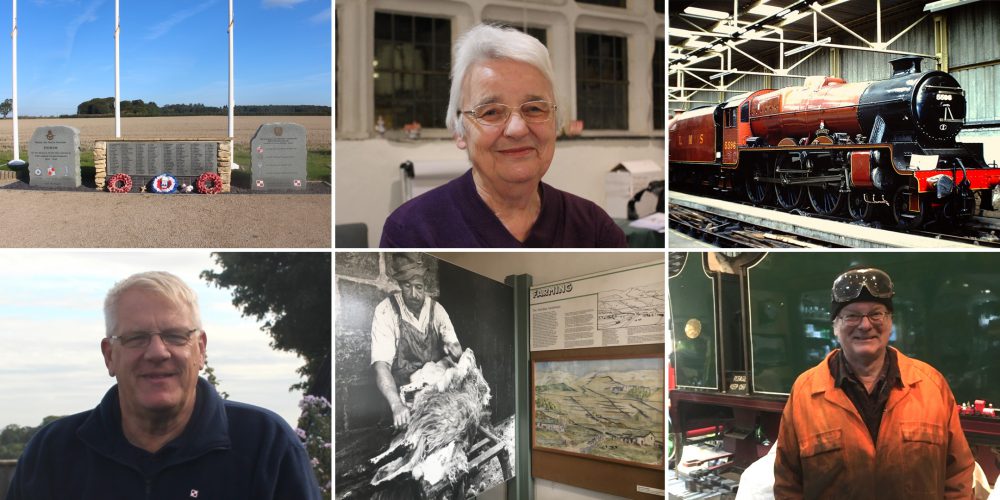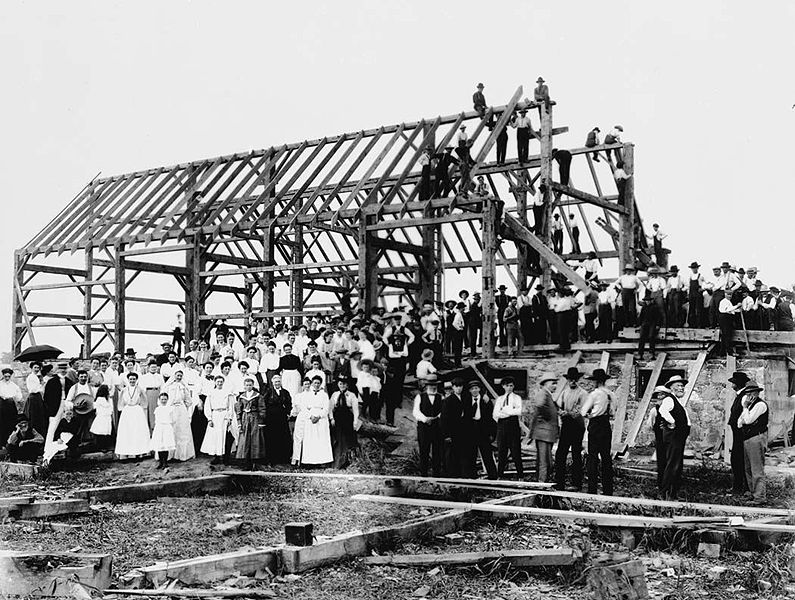How many people does it take to set up a museum?
Conventional histories of museum founders usually concentrate on individuals – the collector whose artefacts provide the basis for a new institution, and heroic directors or curators who single-handedly drive forward their vision of a museum. In our experience, establishing a museum is a collaborative process.
Eileen Burgess listed the people she worked with in setting up Nidderdale Museum in 1976. There was Jack, her husband, and their son Mark, then a teenager; Muriel Swires, who taught at the same junior school as Eileen; Geoffrey Townley who was headmaster and who brought his sixteen year old son Richard; Richard Jackson, also sixteen, and Richard Townley’s friend; Joan Knightson, a geography teacher; and Joyce Swires a cousin of Muriel’s. She worked as a cashier in a Harrogate department store and negotiated with the managers for the purchase of secondhand display cases and mannequins that were used in the museum; Heather Swires was distantly related to Muriel. She came from a farming family and they gave the museum a collection of redundant agricultural machinery and tools. Eileen said ‘Heather spent most of her time with her sleeves rolled up, very old clothes … rubbing down rusty old equipment and black leading it. Whenever I think of black leading, I think of Heather, who went home with her hands and arms absolutely black’. Heather came with her husband Dayne and they brought their two daughters, Deborah and Helen, who were fourteen and twelve. Like the teenagers they were also given jobs to do. Elsy Moss kept the Shaw Mills post office & shop with her husband and was the museums’ costume expert. She was also knowledgeable about the lower dale. Mary Barley was a housewife with a small part-time job in a local firm distributing books to libraries, and complemented Elsy’s knowledge by specialising in the mid-dale & its industries. Tommy Garth was a labourer who had worked on the construction of Scar Reservoir. He had amassed a huge collection of photographs of the waterworks and the dale in general. Joanna Dawson ‘was a pedigree cattle farmer, at a time when being a woman pedigree farmer was quite rare’ and a Methodist preacher. She gave a collection of Methodist ceramics to the museum and curated its exhibition. I asked Eileen if they all had distinct roles. Not really, she said, everyone just turned their hand to whatever was needed, although we were the only people with an estate car so we did a lot of fetching and carrying.


The idea of establishing a new museum, especially local history museums, often arises within an existing group. The possibility of opening a museum in Nidderdale was first mentioned in the tea break at a meeting of the Nidderdale Local History Society. In other cases, the idea of opening a museum was sparked by an event and in Aldbourne, the catalyst was an archaeological dig at the village football field. The ground was about to be refurbished and so local metal detectorists took the opportunity to explore the area. They found all manner of things including a medieval brooch, a small bell, and objects from the American military base that had been in Aldbourne during the Second World War. Terry Gilligan, Alan Heasman, and John Dymond explained that there had been talk in the village of starting a museum for a number of years but finding the objects prompted them to form a heritage group. Over one hundred and twenty people joined. The local council allowed them to use a stone building that had once been a stable, had been converted into public toilets, converted again for use as a youth club, and had since been left empty. Aldbourne Heritage Centre opened in 2016 and they now welcome fans of Dr Who keen to see where the series ‘The Daemons’ was filmed, Americans interested in finding where the Band of Brothers were stationed, and parties of schoolchildren who come to find out about the Great Fire of Aldbourne.


Private museums may involve fewer people and are often the work of a couple. The Micromuseum in Ramsgate that exhibits small computing equipment, the Internal Fire: Museum of Power in West Wales, which is a collection of generators, and Cobbaton Combat Museum in Devon were all set up by husband and wife teams, and in the latter case the couple’s siblings, parents, and later children were also co-opted to help. And even those museums that are ostensibly the work of one or two people usually rely on input from others. Partners, neighbours, friends, and family members may variously help build the museum, make financial loans, pay the mortgage while their spouse devotes their time to the museum, donate objects, hold fund-raising events, take tickets at the door, museum-sit, give guided tours, make cakes for a café and so on.
Setting up a museum almost always depends on the contributions of many people. The work of inspiring founders is inevitably underpinned by the labour of others. Their lower key but essential work is occluded if we concentrate on that of individuals. More significantly, the model of the brilliant leader is not always appropriate. In our experience many micromuseums come out of conversations and of other projects; they are the product of shared ideas and collective effort
Fiona Candlin






